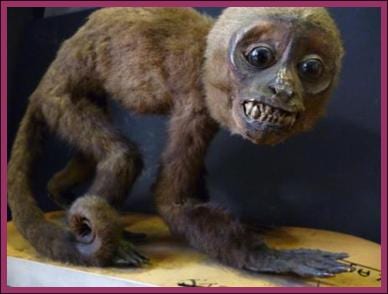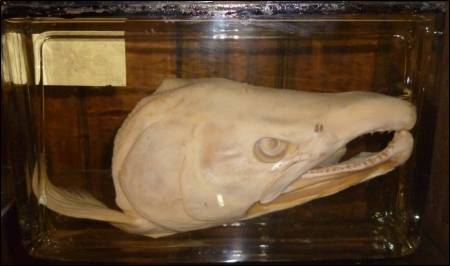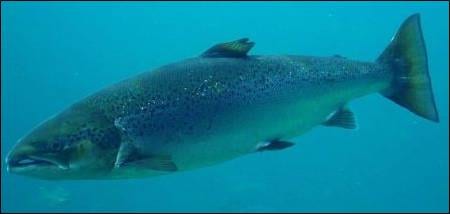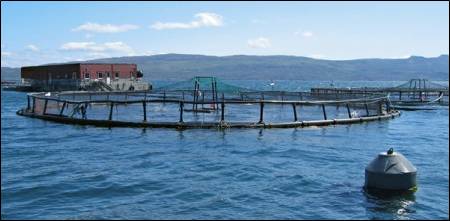Specimen of the Week: Week Seventy-Four
By Emma-Louise Nicholls, on 11 March 2013
 I am surrounded by 68,000 specimens on a regular basis and feel as though I have a personal relationship with the vast majority of them. I care for the specimens, as any Museum Assistant would, like I knew the animal whilst it was alive, loved it, nurtured it when it was sick, laughed with it, cried with it, and now, in it’s death, I am it’s keeper whilst it sleeps for eternity.
I am surrounded by 68,000 specimens on a regular basis and feel as though I have a personal relationship with the vast majority of them. I care for the specimens, as any Museum Assistant would, like I knew the animal whilst it was alive, loved it, nurtured it when it was sick, laughed with it, cried with it, and now, in it’s death, I am it’s keeper whilst it sleeps for eternity.
When you have so many to care for however, it is fascinating to see them through the fresh eyes of someone new to the Museum, or are forming the relationship described above, for the first time. So when I asked a photographer doing a shoot in the Museum recently, out of the specimens he had photographed that day, which was his favourite, his response surprised me. It was not the cute, the cuddly, the impressively large, or notably rare. This week’s Specimen of the Week is…

Half a salmon’s head (Salmo salar) in a box, at the Grant
Museum of Zoology. LDUCZ-V1533
**The Half a Salmon’s Head in a Box**
1) Salmon have a really weird mouth. Did you know that? They’re also really big. An adult male will grow up to a metre and a half, which is not far off me, and weigh around 39 kg. I weigh 55 kg though, so at a little over 1.5 m I guess if I were a salmon, I’d be a fatty.
2) Why is it half a head and why is it in a box? The latter question is much easier to answer, the half-head is preserved in fluid to keep the soft tissues in tact. So simply, it is in a box because if it wasn’t, the liquid would make a mess on the shelf. The missing half of the head was removed by one Sir Victor Negus, a name that makes a certain niche group of biologists quiver with excited admiration. He was a laryngologist who could well be described as a pioneer, a title I seek for myself. His area of interest was, being a laryngologist, the ear, nose and throat and as such, bisected lots of animals to both research and teach his subject.

Atlantic salmon. Image taken by Hans-Petter Fjeld.
Image taken from commons.wikimedia.org
3) Do you know what a baby salmon is called? It was not until early in the 19th century that the more intimate details of the life of a salmon were particularly understood. Before then, so little research had been done in fact, that juvenile salmon were actually classified as a separate species to the adults. Much like the Emperor penguins, though in the their case, I’m not sure they were wrong. “He looks just like his father” definitely does not apply. Salmon eggs are laid and fertilised in a gravel depression in freshwater, created by the female. The depression, not the water. After the egg, there are four stages of development no less, in which technically, the name of the salmon changes from egg, to alevins, to fry, to parr, and then to smolt, before finally complex internal developments occur which allow them to survive in salt water. At which point, off they go. So next time someone asks you what a baby salmon is called, ask them how many days old the individual is, to which they are referring.
4) Once they have grown up and left freshwater-home, the salmon congregate in small groups and swim really huge distances to look for food. The effort that they go to to get their food should shame us for the lack of effort we make to get ours, given that it’s them. To stock a supermarket, thousands upon thousands of them are killed to fill the shelves for our convenience, the really upsetting part being that a lot are then thrown away as waste because they aren’t bought. So ironic and sad. Aaaaanyway… salmon like to eat squid, shrimp and other, smaller fish. They only lead this nomadic lifestyle for a year or so however, before they make a simply epic journey back to where they were born in order to breed. Have you ever seen footage of cute fluffy brown bears standing atop a small waterfall with mouths agape catching fish? These fish are our salmon, and they are leaping those incredible vertical distances up waterfalls, up to a whopping 12 feet, in their gargantuan efforts to get back home to breed. To make matters worse, during this journey they are literally starving due to the lack of food. Respect y’all.

A salmon farm in Portree Bay, Isle of Sky. (Image taken by John Allan.
Image taken from commons.wikimedia.org)
5) Salmon tastes sooooooooo gooooooood. And yet it is sooooooooo baaaaaaaaaad to eat it. Wild salmon has all the characteristics of a species that is ideally suited to not be a food crop. Whilst eating salmon raised in fish farms (which is where most salmon comes from) may sound much better than eating wild salmon, it actually takes 2.3 kg of wild caught fish to produce half a kg of farmed fish. Salmon in fish farms are susceptible to chronic sea lice which is a meany parasite that enjoys eating the fish’s face, right down to the bone. What a horrible life for such a beautiful and complex species. Farmed salmon frequently go insane and injuries are often caused by the intense over crowding in their pens. PETA report that 27 fish will fill a space the size of a bath tub. And salmon are large fish. However, there is good news my fish-loving friends, a faux-fish product exists that can be bought from Asian food shops or many health shops, and it tastes pretty much the same I hear. True or not, whack some salmon shake on it and bob’s your uncle either way. What’s more, it is said to reduce the risk of cancer, diabetes, and obesity AND it’s good for the environment, and our salmon friends- hooray for faux-fish.
Emma-Louise Nicholls is the Museum Assistant at the Grant Museum of Zoology
 Close
Close

